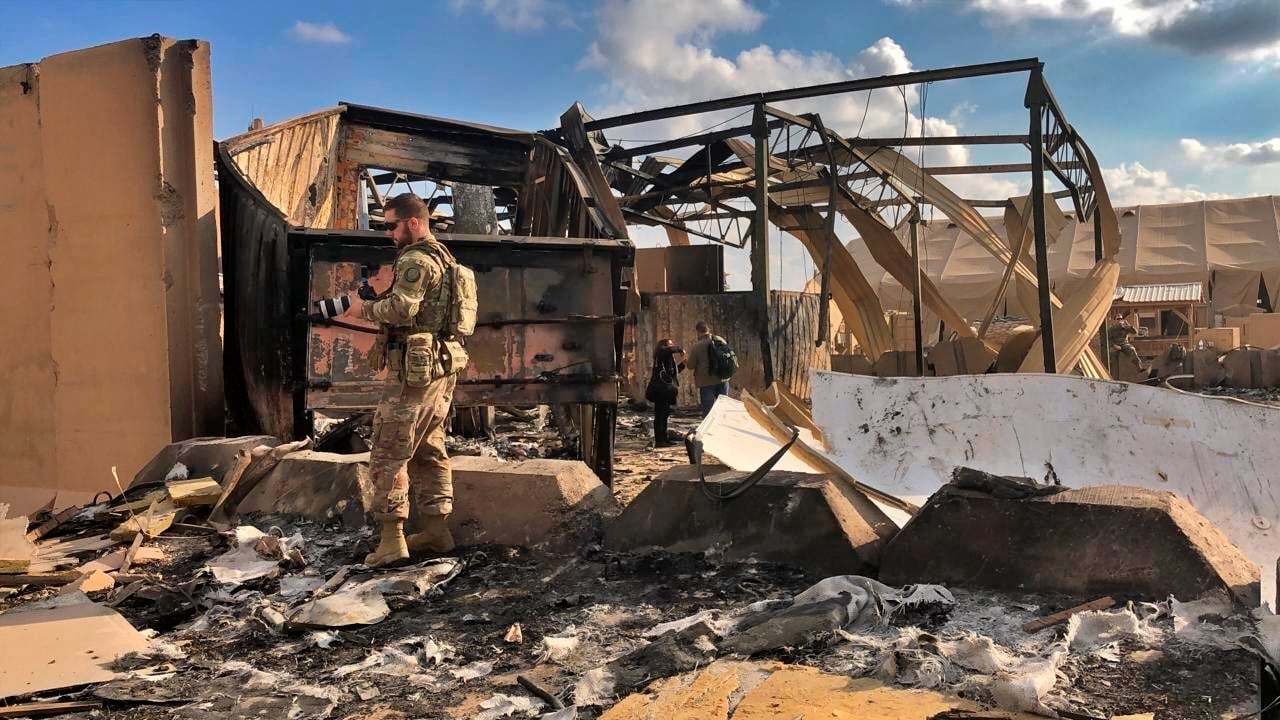More than 100 U.S. troops have been diagnosed with traumatic brain injury following Iran’s Jan. 8 ballistic missile attack on al-Asad air base in Iraq.
According to the Pentagon, a total of 109 U.S. service members have been diagnosed with mild TBI — up from the 64 cases the Defense Department previously identified in its last update. So far, 76 of those troops have returned to duty.
“The Defense Department is steadfast in its efforts to deliver programs and services intended to lead to the best possible outcomes for our service members,” Pentagon spokesperson Alyssa Farah said in a statement Monday.
“We are grateful to the efforts of our medical professionals who have worked diligently to ensure the appropriate level of care for our service members, which has enabled nearly 70 percent of those diagnosed to return to duty," she said. "We must continue to address physical and mental health together.”
The Pentagon stressed that numbers could change, noting the 109 cases are a “snapshot in time.”
Reuters was the first to report the increase in injuries.
Although Pentagon officials initially said that no “casualties” resulted from the attack, the Pentagon started backtracking on Jan. 16 and said 11 service members were injured following the strike at al-Asad airbase in Iraq.
That number has continued to climb in a series of updates, and the Pentagon last said 64 service members were diagnosed with mild TBI in connection with the attack on Jan. 30.
Tehran’s attack targeting al-Asad aibase — where roughly 1,000 U.S. troops are stationed — came after the U.S. conducted a strike that killed Iran’s Quds Force Commander Quassem Soleimani on Jan. 3.
Secretary of Defense Mark Esper initially said that more than 10 ballistic missiles hit al-Asad during the strike, damaging tentage, a parking lot and other equipment. Even so, he characterized the aftermath as nothing “major” at the time.
Even so, Army Gen. Mark Milley, chairman of the Joint Chiefs of Staff, predicted that Iran’s intent was to kill Americans on Jan. 8, and later disclosed Iran’s missiles were lethal 1,000- to 2,000-pound munitions.
“These things have bursting radiuses of 50 to 100 feet, and that’s just the shrapnel in the actual blast. These are very, very significant, serious weapons,” Milley said Jan 30.
“And you know, if you’re within a certain range of that thing, there’s no helmet or anything else that’s going to save you,” Milley added.
As the Pentagon has issued new TBI estimates, the Defense Department has noted that TBI symptoms like headaches and dizziness do not immediately appear, and argued that the Pentagon has been forthcoming about TBI cases stemming from Tehran’s attack.
“A lot of these symptoms, they are late developing,” Jonathan Hoffman, the chief Pentagon spokesman said Jan. 28. “They manifest over a period of time.”
Although President Donald Trump took some heat for characterizing the TBI as “not serious” and simply headaches, his rhetoric though is not out of line with Pentagon vernacular. Milley also said that the Pentagon’s injury reporting systems is broken down into three categories: very serious, serious and not serious. He added that mild TBI is categorized as a mild injury.
“That’s not to minimize or dismiss or anything, that’s just to say that’s how we categorize injuries,” Milley said.
Following Trump’s remarks on the issue, Esper said he personally briefed Trump on the gravity of the injuries.
“I’ve had the chance to speak with the president. He is very concerned about the health and welfare of all of our service members — particularly those who were involved in the operations in Iraq,” Esper said. “And he understands the nature of these injuries."
In total, more than 408,000 cases of traumatic brain injuries in service members have been reported since 2000.




